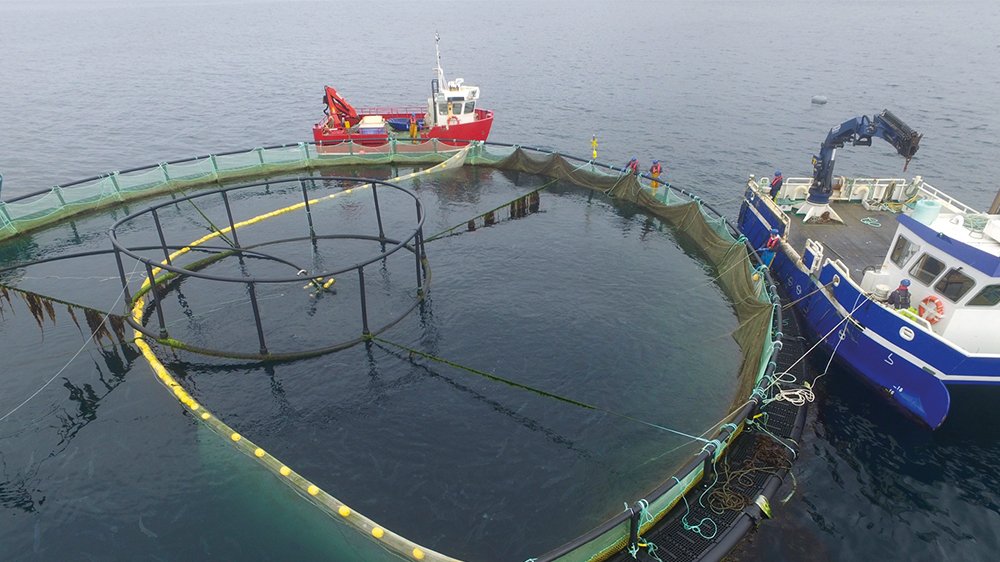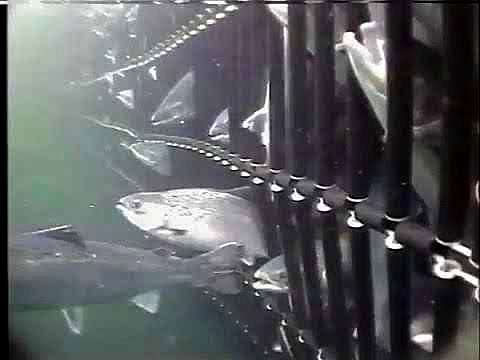
Better fish welfare and economic benefits go hand-in-hand when regularly sorting fish ready for harvesting. By removing large and dominant fish from the population, the ideal conditions are created to allow smaller fish to achieve rapid weight gain. By utilizing the dominance characteristics that occur in all fish stocks, regular grading every six to eight weeks can optimize results through ongoing extraction of large fish. A sweep net combined with a Flexi-Panel is a passive and gentle sorting method that provides immediate financial gain.
There are several reasons why:
1. Large fish acquire more of the feed than small fish
Survival of the fittest applies in pens, and the big fish catch a more substantial proportion of feed than smaller fish. This becomes a self-reinforcing tendency, with the big fish growing bigger and the smaller fish smaller. Removing big fish earlier in the cycle betters growth conditions for the smaller fish left in the pen. We often see a growth of up to half a kilo for these individuals.
2. The price per kilogram is higher for evenly sized fish
We recommend grading the stock two to three times during a cycle. Using this method to remove fish ready for harvesting, one will supply a more uniform-sized fish to the harvesting plant. That means a better price per kilo on a higher proportion of the fish.
Here's an illustrating calculation:
Our example is based on a pen with 175,000 fish with an average weight of 4 kilograms.
Yield: 230 tonnes
Grille size: 68 mm
| UNSORTED | SORTED | |
| Largest fish | 7,500g | 7,500g |
| Smallest fish | 500g | 4,500g |
| Ratio large/small | 15 | 1.66 |
This is based on perfect grading where no fish above 4,500g passes through the Flexi-Panel.
3. Better feed utilization
When fish in the pen are about the same size, it is easier to ensure that the feed is evenly distributed between the individuals. The problem with larger individuals outcompeting the smaller ones at the feed barrel decreases, and the feed utilization rate improves. You also reduce feed costs considerably by avoiding big fish overfeeding.
4. Easier to get the best market price
The market price is heavily influenced by supply and demand. High-quality fish in sizes that are scarce at harvesting time achieves the best price. If you sort the fish ahead of harvesting, you maximize your return on investment by selling only the best-priced fish.
5. Cleaning fish are removed before delivery to the harvesting plant
The Flexi-Panel work equally well for sorting cleaning fish. It's a double gain. You get rid of the sorting cost at the plant, and you achieve a higher price per kilo on fish for harvesting. The cleaning fish stay in the pen, removing the cost of buying new ones for the next generation.
Don't underestimate the value of this sorting. We know of cases where the entire investment in a Flexi-Panel is paid off in a single generation because cleaning fish were removed before delivery to the harvesting plant.

Better fish welfare
A sorting net is a passive method of sorting. It has significant benefits for fish welfare compared to mechanical sorting. The sorting grille is made up of rolling bars that are gentle on the fish and minimize the risk of damage and loss. The fish are sorted in the water quite simply by swimming through the grille. It means less stress and better fish welfare. The large sorting area of the Shetland grille (≥ 90 m2) means that sorting goes faster, with less stress for the fish and higher productivity as a result.
If you want to know more about sorting, please contact Jane Løvold Veivåg.
You can also fill out our contact form below.